- Clone
- OX-7 (See other available formats)
- Regulatory Status
- RUO
- Other Names
- Thy-1, Thy-1.1
- Isotype
- Mouse IgG1, κ
- Ave. Rating
- Submit a Review
- Product Citations
- publications
CD90, also known as Thy-1, is a 28-30 kD GPI-linked membrane glycoprotein. It is a member of the immunoglobulin superfamily and has been shown to interact with CD45 in signal transduction during lymphocyte proliferation and differentiation. CD90 is expressed on hematopoietic stem cells, neurons, thymocytes, peripheral T cells, fibroblasts, stromal cells.
Product DetailsProduct Details
- Verified Reactivity
- Rat
- Reported Reactivity
- Rabbit, Guinea Pig
- Antibody Type
- Monoclonal
- Host Species
- Mouse
- Immunogen
- Rat thymocyte Thy-1 antigen
- Formulation
- Phosphate-buffered solution, pH 7.2, containing 0.09% sodium azide
- Preparation
- The antibody was purified by affinity chromatography and conjugated with Spark Blue™ 574 under optimal conditions.
- Concentration
- 0.2 mg/mL
- Storage & Handling
- The antibody solution should be stored undiluted between 2°C and 8°C, and protected from prolonged exposure to light. Do not freeze.
- Application
-
FC
- Recommended Usage
-
Flexi-Fluors™ are provided at a standard 0.2 mg/mL concentration. We recommend titrating this reagent to determine the optimal concentration for each application. For many flow cytometry applications, conjugated antibodies perform well at concentrations ranging from 0.03 to 1.0 µg per million cells in 100 µL. We recommend testing a range of concentrations starting from 10 µg/mL.
For example, make five 1:1 serial dilutions of the 0.2 mg/mL antibody. Add 5 µL of each dilution (including the undiluted antibody) to 100 µL of cells (at 107 cells/mL) to test six concentrations -- 1.0, 0.5, 0.25, 0.125, 0.06, and 0.03 µg per million cells in 100 µL volume. Compare staining patterns or create a titration curve using the MFI or staining index to determine the optimal concentration. - Excitation Laser
-
Blue Laser (488 nm)
- Application Notes
-
The OX-7 antibody reacts with rat CD90 and mouse CD90.1 (Thy-1.1) (which is expressed by mouse strains of AKR/J, PL, and FVB/N), but not mouse CD90.2.
Additional reported applications (for the relevant formats) include: immunohistochemical7 and immunofluorescent8 staining of acetone-fixed frozen sections and zinc-fixed paraffin-embedded sections, immunoprecipitation1, Western blotting1, in vitro activation of leukocytes2, induction of endothelial cell permeability3, induction of apoptosis in glomerular mesangial cells, and induction of glomerulonephritis in vivo4. - Additional Product Notes
-
For more information about Flexi-Fluors™, visit our Flexi-Fluor™ page and review FAQs associated with this product line.
-
Application References
(PubMed link indicates BioLegend citation) -
- Jeng CJ, et al. 1998. J. Cell Biol. 140:685. (IP, WB)
- Nakashima I, et al. 1991. J. Immunol. 147:1153.
- Ishizu A, et al. 1995. Int. Immunol. 7:1939.
- Eitner F. 1997. Kidney. Int. 51:69.
- Kawachi H, et al. 1992. Clin. Exp. Immunol. 88:399. (WB)
- Dyer KD, et al. 2007. J. Immunol. 179:1693. (FC) PubMed
- Daniel C, et al. 2012. Lab Invest. 92:812. (IHC-P)
- Li B, et al. 2006. Kidney Int. 69:323. (ICC)
- Uchimura H, et al. 2005. J Am Soc Nephrol. 16(4):997-1004. (IHC-F)
- Inagi R, et al. 2008. J Am Soc Nephrol. 19(5):915-22. (IHC-P)
Antigen Details
- Structure
- Ig superfamily, GPI-anchored membrane glycoprotein, 28-30 kD
- Distribution
-
Hematopoietic stem cells, thymocytes, a subset of peripheral blood T cells, early myeloid and erythroid progenitors, immature B cells, neurons, activated endothelium, mast cells, dendritic cells, glomeruli
- Function
- Adhesion, signal transduction, lymphocyte co-stimulation, proliferation and differentiation of hematopoietic stem cells
- Ligand/Receptor
- Interacts with CD45
- Cell Type
- B cells, Dendritic cells, Endothelial cells, Hematopoietic stem and progenitors, Mast cells, Neurons, T cells, Thymocytes
- Biology Area
- Immunology
- Molecular Family
- CD Molecules
- Antigen References
-
1. Campbell DG, et al. 1981. Biochem. J. 195:15.
2. Hosseinzadeh H, et al. 1993. J. Immunol. 150:1670. - Gene ID
- 21838 View all products for this Gene ID 24832 View all products for this Gene ID
- UniProt
- View information about CD90/CD90.1 on UniProt.org
Related Pages & Pathways
Pages
Related FAQs
- What are Flexi-Fluors?
-
Flexi-Fluors are rapidly made-to-order conjugated antibodies. The technology, manufacturing processes, and specifications used to create Flexi-Fluors are the same as our regular catalog products. However, the optimal concentration and performance of each Flexi-Fluor must be determined by the customer.
- How quickly will I receive my order?
-
We aim to ship Flexi-Fluors within 2-3 weeks of receipt of your order. However, depending on your location, shipping times may vary.
- How are Flexi-Fluors different from regular catalog products?
-
Flexi-Fluors are made on demand, specifically for you. Flexi-Fluors are manufactured using the same high-quality standards, and specifications as other catalog products. For faster delivery, Flexi-Fluors are not tested by flow cytometry to determine optimal concentrations or evaluate performance. This testing needs to be performed by the customer.
- How do I determine the optimal concentration for using my Flexi-Fluor? How should I titrate my antibody?
-
Flexi-Fluors are provided at a standard 0.2 mg/mL concentration. We recommend that you titrate your antibody to determine the optimal concentration to use for your application. For many flow cytometry applications, conjugated antibodies perform well at concentrations ranging from 0.03 to 1.0 µg per million cells in 100 µL volume. We recommend that you test a range of concentrations starting from 10 µg/mL.
For example, make five 1:1 serial dilutions of your 0.2 mg/mL antibody. Add 5 µL of each dilution (including the undiluted antibody) to 100 µL of cells (at 107 cells/ml) to test six concentrations - 1.0, 0.5, 0.25, 0.125, 0.06, and 0.03 µg per million cells in 100 µL volume. Compare staining patterns or create a titration curve using the MFI or staining index to determine the optimal concentration.
- I can’t find the antibody-dye combination that I need. When will it be available?
-
We continuously update our catalog, introducing scores of new products every month. Please get in touch with our Technical Service team for an update on new products or recommendations for suitable alternatives to complete your panel. Or contact Custom Solutions to inquire about our affordable custom conjugation services.
- I need help to validate the performance of my Flexi-Fluor. Who should I contact?
-
Please get in touch with Technical Service for assistance.
- Can I order more than 50 μg of a Flexi-Fluor?
-
Yes, you can order multiple vials of the same Flexi-Fluor products. We cannot guarantee, however, that these vials will be bottled from the same lot. For bulk single-lot orders, contact our Custom Solutions team.
- What is the expiration date of my Flexi-Fluor?
-
Expiration dates can be found on the vial label or by using our CoA lookup tool.
Other Formats
View All CD90/CD90.1 Reagents Request Custom ConjugationCompare Data Across All Formats
This data display is provided for general comparisons between formats.
Your actual data may vary due to variations in samples, target cells, instruments and their settings, staining conditions, and other factors.
If you need assistance with selecting the best format contact our expert technical support team.
-
PE/Cyanine7 anti-rat CD90/mouse CD90.1 (Thy1.1)
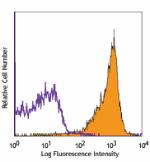
LOU rat thymocytes stained with OX-7 PE/Cyanine7 -
Purified anti-rat CD90/mouse CD90.1 (Thy1.1)
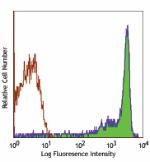
LOU rat thymocytes stained with purified OX-7, followed by a... 
FVB/N mouse frozen thymus section was fixed with 4% paraform... -
FITC anti-rat CD90/mouse CD90.1 (Thy1.1)
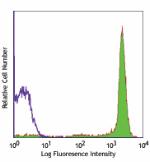
Lou rat thymocytes stained with OX-7 FITC -
Alexa Fluor® 488 anti-rat CD90/mouse CD90.1 (Thy1.1)
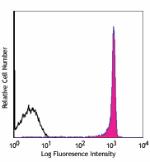
Rat thymocytes stained with OX-7 Alexa Fluor® 488 
FVB/N mouse frozen thymus section was fixed with 4% paraform... -
Alexa Fluor® 647 anti-rat CD90/mouse CD90.1 (Thy1.1)
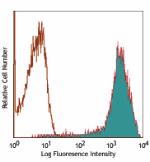
LOU rat thymocytes stained with OX-7 Alexa Fluor® 647 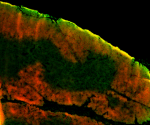
FVB/N mouse frozen thymus section was fixed with 4% paraform... -
PerCP/Cyanine5.5 anti-rat CD90/mouse CD90.1 (Thy1.1)

Lewis rat thymocytes were stained with CD3 APC and CD90/mous... -
APC/Cyanine7 anti-rat CD90/mouse CD90.1 (Thy1.1)
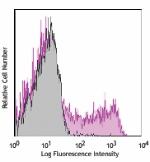
LOU rat splenocytes stained with OX-7 APC/Cyanine7 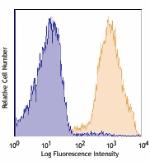
LOU rat thymocytes stained with OX-7 APC/Cyanine7 -
Pacific Blue™ anti-rat CD90/mouse CD90.1 (Thy1.1)
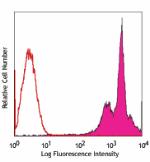
LOU rat thymocytes stained with OX-7 Pacific Blue™ -
PerCP anti-rat CD90/mouse CD90.1 (Thy1.1)
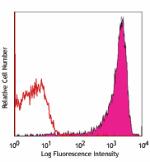
Lou rat thymocytes stained with OX-7 PerCP -
PE anti-rat CD90/mouse CD90.1 (Thy1.1)
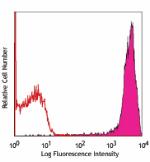
LOU rat thymocytes stained with OX-7 PE -
APC anti-rat CD90/mouse CD90.1 (Thy1.1)
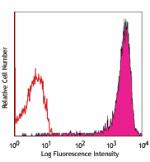
Lou rat thymocytes stained with OX-7 APC -
Alexa Fluor® 700 anti-rat CD90/mouse CD90.1 (Thy1.1)
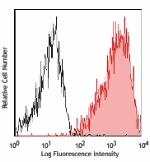
LOU rat thymocytes stained with OX-7 Alexa Fluor® 700 -
Biotin anti-rat CD90/mouse CD90.1 (Thy1.1)
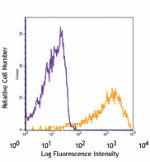
LOU rat thymocytes stained with OX-7 biotin, followed by Sav... -
Brilliant Violet 421™ anti-rat CD90/mouse CD90.1 (Thy1.1)
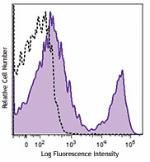
FVB mouse splenocytes were stained with CD90.1 (clone OX-7) ... 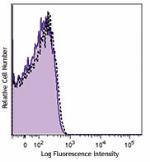
C57BL/6 mouse splenocytes were stained with CD90.1 (clone OX... -
Brilliant Violet 650™ anti-rat CD90/mouse CD90.1 (Thy1.1)
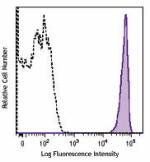
Lou rat thymocytes were stained with CD90.1 (clone OX-7) Bri... -
Brilliant Violet 510™ anti-rat CD90/mouse CD90.1 (Thy1.1)
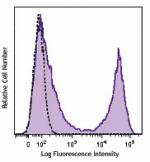
FVB mouse splenocytes were stained with CD90.1 (clone OX-7) ... 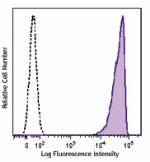
Lewis rat thymocytes were stained with CD90.1 (clone OX-7) B... -
Brilliant Violet 605™ anti-rat CD90/mouse CD90.1 (Thy1.1)
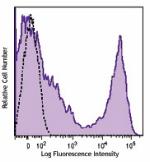
FVB/N mouse splenocytes were stained with CD90.1 (clone OX-7... 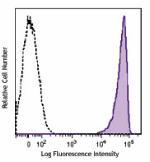
Lewis rat thymocytes were stained with CD90.1 (clone OX-7) B... -
Brilliant Violet 711™ anti-rat CD90/mouse CD90.1 (Thy1.1)
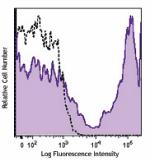
FVB/N mouse splenocytes were stained with CD90.1 (clone OX-7... 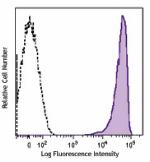
Lewis rat thymocytes were stained with CD90.1 (clone OX-7) B... -
PE/Dazzle™ 594 anti-rat CD90/mouse CD90.1 (Thy1.1)
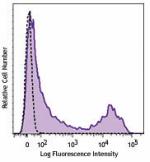
FVB mouse splenocytes were stained with CD90.1 (clone OX-7) ... -
APC/Fire™ 750 anti-rat CD90/mouse CD90.1 (Thy1.1)
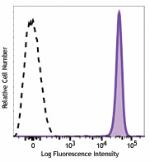
Lewis rat thymocytes were stained with APC/Fire™ 750 anti-ra... -
Alexa Fluor® 594 anti-rat CD90/mouse CD90.1 (Thy1.1)

FVB/N mouse frozen thymus section was fixed with 4% paraform... -
TotalSeq™-A0380 anti-rat CD90/mouse CD90.1 (Thy1.1)
-
TotalSeq™-B0380 anti-rat CD90/mouse CD90.1 (Thy1.1)
-
TotalSeq™-C0380 anti-rat CD90/mouse CD90.1 (Thy1.1)
-
Brilliant Violet 785™ anti-rat CD90/mouse CD90.1 (Thy1.1)

Lewis rat thymocytes were stained with anti-rat CD3 FITC and... -
Spark Blue™ 550 anti-rat CD90/mouse CD90.1 (Thy1.1) (Flexi-Fluor™)
-
Spark Blue™ 574 anti-rat CD90/mouse CD90.1 (Thy1.1) (Flexi-Fluor™)
-
Spark Red™ 718 anti-rat CD90/mouse CD90.1 (Thy1.1) (Flexi-Fluor™)














Follow Us